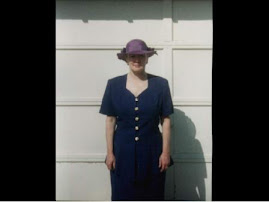The Hepatitis C Generation
Are Baby Boomers More Prone To Hepatitis C?
Newsweek.com
The Hepatitis C Generation
Thanks to a disease that lays dormant for up to 30 years, Baby Boomers well past their wild years are starting to suffer the consequences.
Jan 9 2010
When Alan Franciscus was diagnosed with hepatitis C in 1996, his first question was, "Am I going to die?" When his doctor assured him that many treatment options were available, he had a second question: "What is hepatitis C?" Looking back, Franciscus, a 61 year-old San Francisco resident says: "One of the most disturbing things to me was I had never heard of it. I really did not know a thing about it."
Franciscus' question, it turns out, is not such a bizarre one to ask. Despite affecting 1 percent of the population, hepatitis C remains a disease generally misunderstood by the general public with little in financial commitments from the federal government. The CDC's National Center for HIV/AIDS, Viral Hepatitis, Sexually Transmitted Diseases, and Tuberculosis Prevention had a budget of almost $1 billion for 2008. Only 2 percent of that was allocated to hepatitis B and hepatitis C despite both viruses being five times more prevalent. "No one really knew what hepatitis C was," Franciscus remembers. "A bunch of coworkers thought I got it from eating bad food."
A newly-published Institute of Medicine Report on hepatitis B and C, published today, underscores how this lack of understanding and attention has played out. Although the risk factors for hepatitis C are widely known and completely preventable, the IOM estimates that between 2.7 million and 3.9 million Americans have contracted hepatitis C. (from Jules: Brian Edlin's study presented at AASLD in 2008 reports 5 million have HCV. Other CDC research reports do not include homeless, incarcerated etc).
But the most startling detail about hepatitis C may not be its prevalence, but the population it affects. Two-thirds of those with the virus are Baby Boomers, adults in their 50s or 60s who may have experimented with intravenous drugs decades ago. For many of them, the Summer of Love is a hazy, distant memory from their youth. But hepatitis C, which is transferred by contact with infected blood, has a particularly long incubation period, often 20 or 30 years. That means that the side effects of one drug use in the 1970s could now start to show. "Even though Boomers moved on with their lives, they could be living with an infection that happened many years ago," says John W. Ward, division director for the Center for Disease Control's Division of Viral Hepatitis. "Now, they're aging into a period of their lives when Hepatitis C could become manifest through physical symptoms." One study published last May estimates that, in the next 20 years, total medical costs for Hepatitis C patients will nearly triple, from $30 to $85 billion.
Hepatitis C is a serious challenge for both doctors and public health officials, largely because of its long incubation period. An individual infected with hepatitis C can live the majority of their life not knowing they were infected. In fact, the new IOM report suggests this is usually the case: 75 percent of those with hepatitis C don't even know they have it. And unlike other forms of the hepatitis virus, like A and B, there is no known vaccine. So the virus continues to be transmitted through exposure to infected blood, often injection drug use. Boomers may have also become infected by a blood transfusion or organ transplant before 1992, when officials began screening the blood supply for the disease.
Of those infected with the virus, about 60-70 percent will develop chronic liver disease. For about 40 percent, a months-long regimen of shots and pills will eradicate the virus. But many will continue to live with the disease as a chronic condition; 1 to 5 percent will die of the consequences of liver disease. Some expect to see these conditions become significantly more prevalent as Boomers' cases move from virus to disease. One study, a Milliman Report published in May 2009, predicted that the number of patients with advanced liver disease will be four times greater than it is today by 2029. Cases of cirrhosis, scaring of the liver, will also quadruple.
This means that right now, before that wave hits, is a particularly critical juncture for early detection and treatment of hepatitis C, particularly among the Boomer population. "There's a window of opportunity to identify the disease early," says Ward. Hepatitis C is usually diagnosed with a simple blood test and patients found positive have a number of options in disease management. They can monitor levels of certain liver enzymes, charting any advancement in liver disease, and make lifestyle adjustments to manage the disease such as eliminating alcohol.
So, if the test is so easy, and the risk largely pooled in a specific demographic, why do so many cases go decades undiagnosed? Doctors say it has a lot do with the stigma surrounding liver disease. "If Uncle Bernie says he has cirrhosis, it's like, 'well how much was he drinking?' says Allan Wolkoff, chairman of the American Liver Society and a professor at the Albert Einstein School of Medicine in New York City. "We need to work on that. Good people get liver disease; kids get liver disease. You can get liver disease through little or no fault of your own." In a study of patients in a liver clinic in Iowa, 57 percent of Hepatitis C-positive people reported having experienced stigma associated with their infection. Given that, it's easy to see why well-to-do Boomers rarely get tested for a disease often associated with junkies and alcoholics: neither they, nor their doctors, think to even ask.
Both the IOM and CDC want to change that. The IOM report recommends a comprehensive public education and surveillance campaign, as to increase awareness of the disease, following in the model of HIV/AIDs public awareness campaigns in the 1990s. "As in the case of HIV/AIDS," the report concludes, "increasing general public knowledge about hepatitis B and hepatitis C can be expected to reduce discrimination toward infected people, reduce transmission, and increase early diagnosis and treatment that ultimately save lives." A lot of this, says Wolkoff, hinges on doctors: "there's a certain amount of physician education necessary. Even a small rise in physicians talking about this, talking about it with their patients, could make a big difference.
The CDC may also play a role, particularly in the testing of Boomers. Right now, the organization recommends that anyone who ever tried injected illegal drugs or had a blood donation prior to 1992 be tested. But patients may make compliance with such a regulation difficult -- they may not, for example, volunteer information about that one time at Woodstock -- the CDC is considering a blanket, age-based screening recommendation. "We're launching studies to see if it's feasible and makes sense," says Ward, the CDC official. "Just like everyone over 50 should have a check for colon cancer, it might fit into an age-based checklist of preventative services."
Franciscus did not know much about hepatitis C when he was diagnosed. But he quickly learned one thing: there was not nearly enough information available to patients like him. So he founded the HCV Advocate, a newsletter that now gets 400,000 visits online each month and is his new, full-time job. He regularly speaks across the country, to health providers and educators, on the subject. "The key is going to be public awareness and educating medical providers, to ask questions and get people tested," says Franciscus. "If you catch it early, nobody will die from Hepatitis C."
Conference Call, Monday January 11, 2010
http://www.natap.org/2009/HCV/120609_01.htm
Subscribe to:
Post Comments (Atom)





Hi Colleen,
ReplyDeleteOoooh. Hepatitis. Yikes. Thanks for the informative post... I'm actually genX, but same for us.